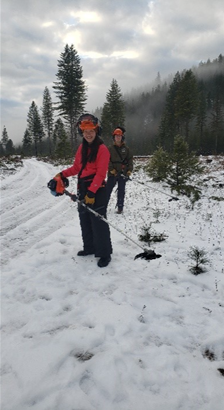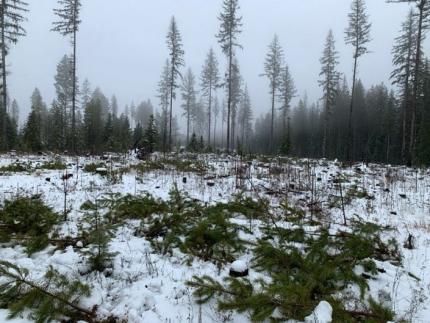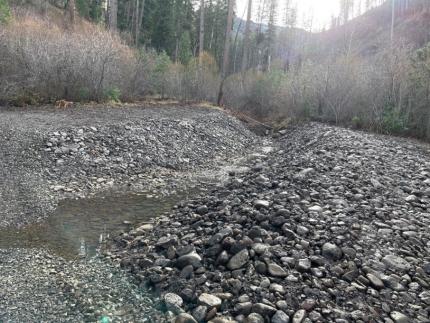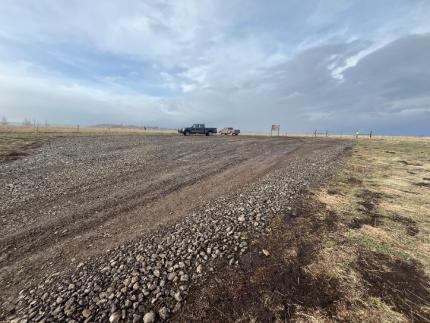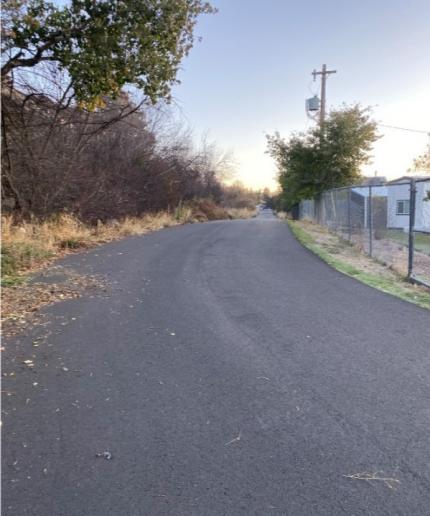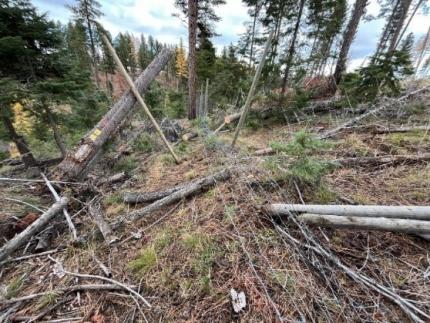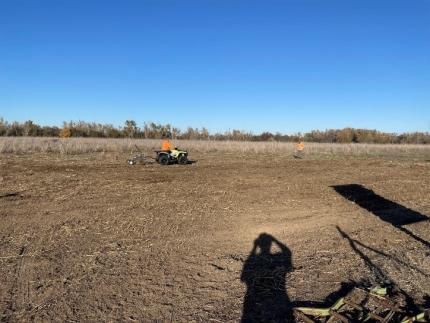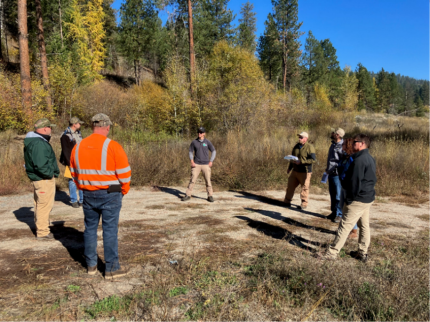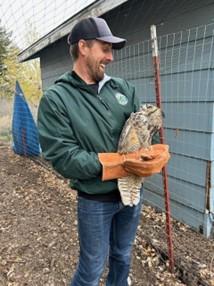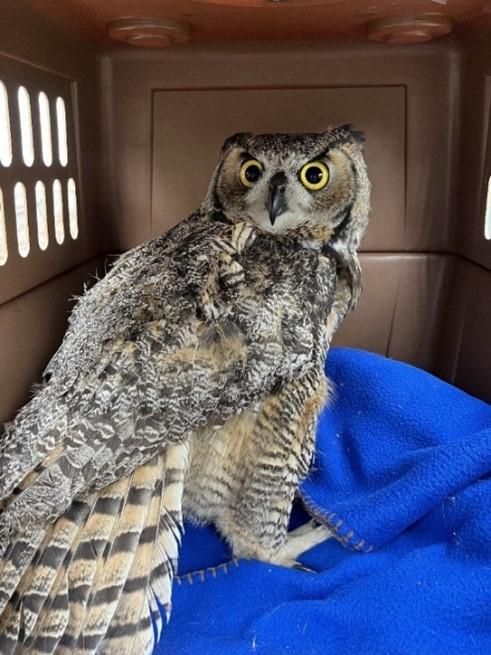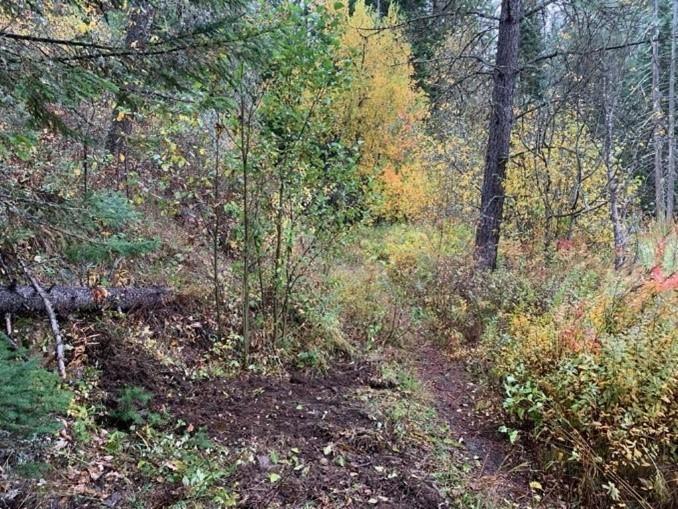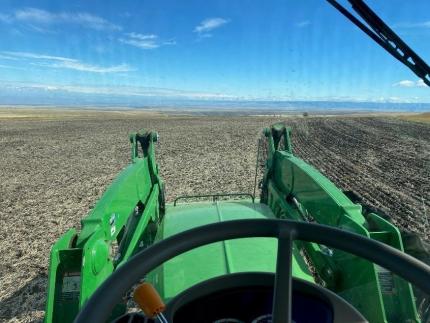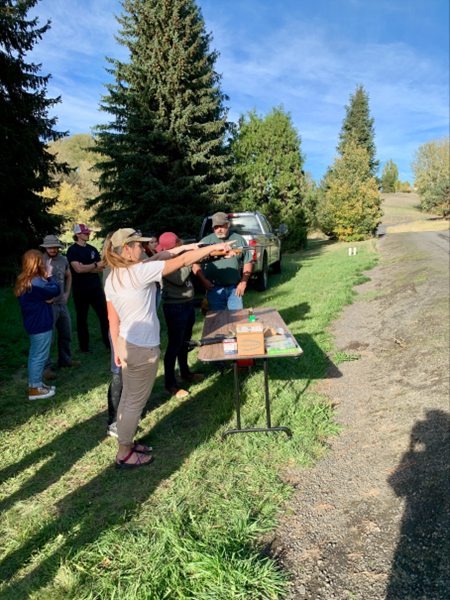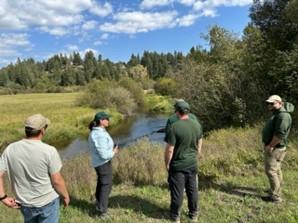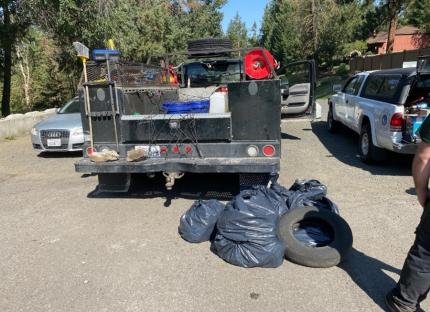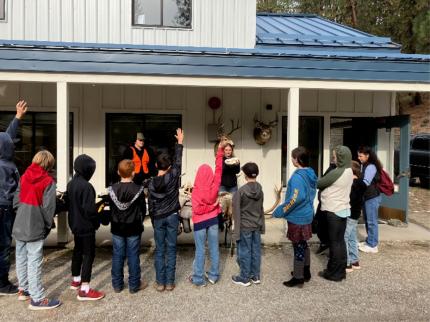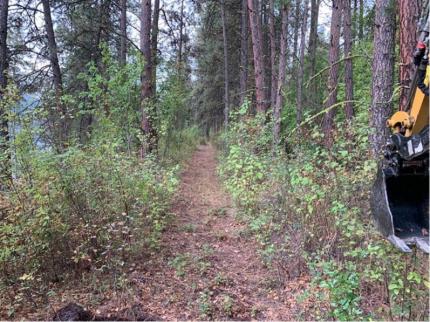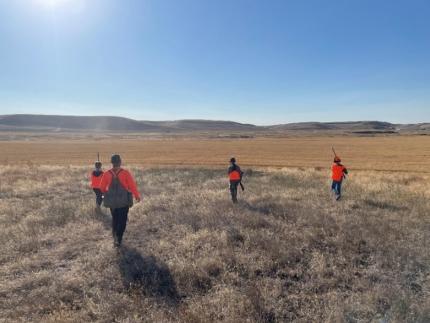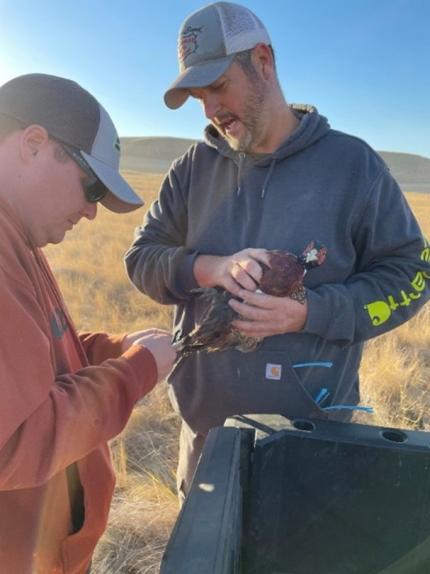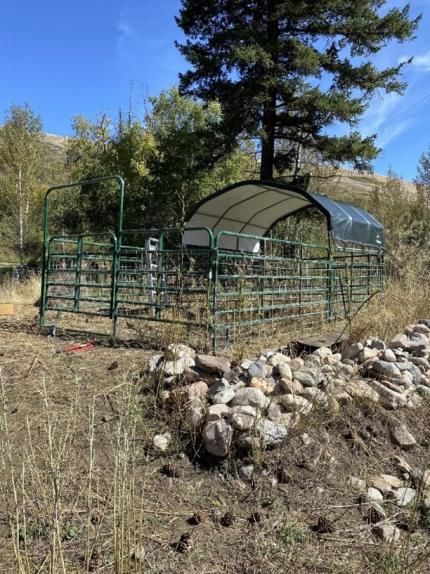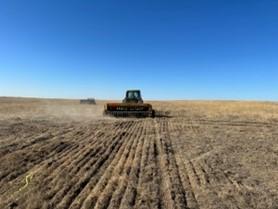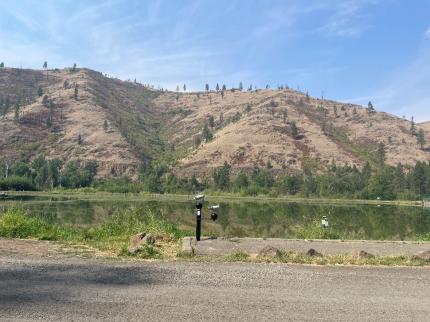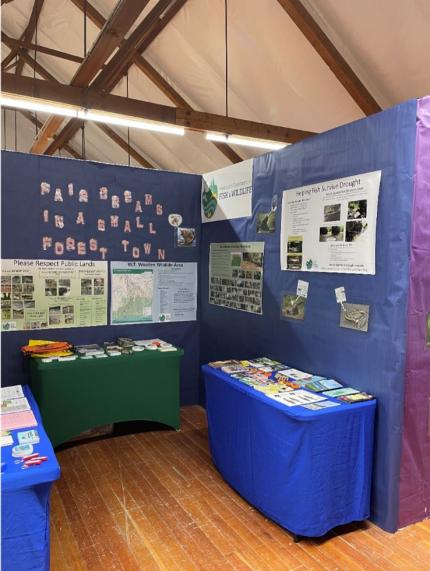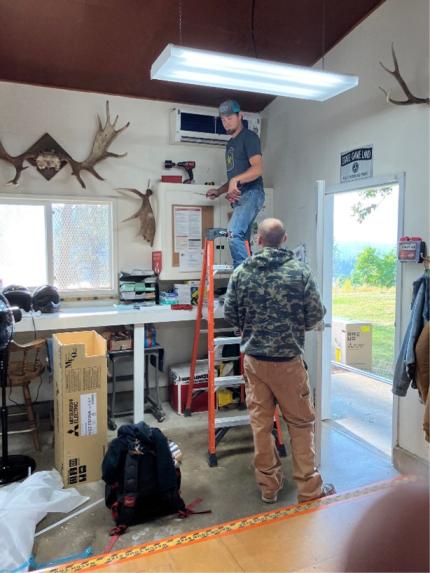Biweekly report Jan1-15 2024 - Region 1 (Eastern)
Managing Wildlife Populations
Golden Eagles: Biologist Lowe attended a meeting to learn about a tool developed by Research Scientist Watson and GIS Analyst Jansen to predict landscape use by breeding golden eagles. The tool is intended to be used for evaluating wind power development in Washington.
Providing Recreation Opportunities
Rogersburg Road: Access Technician Nielsen used the access John Deere 2502R tractor to grade and make repairs to Rogersburg Road along the lower Grande Ronde River. Several neighboring landowners complimented Steve on his good work!

Asotin Creek Wildlife Area Shooting Range: Heimgartner and Nielsen used the access program dump trailer and 2025R John Deere tractor to spread gravel at the parking area for the shooting range. One load of gravel was hauled up from the Clarkston Shop and the other two came from a stockpile at the mouth of Dry Gulch. Heimgartner and Nielsen also installed new fire rings at the Black Butte access site and swimming hole site near Joseph Creek Road.
Providing Conflict Prevention and Education
W. T. Wooten Wildlife Area: Natural Resource Technician Tritt checked the elk fence along the Mountain Road for trees over the fence after the severe winds in the area this week.
Reported Wolf Activity: Wildlife Conflict Specialist Kolb responded to a complaint of a wolf being observed in a 200-acre calving pasture in Columbia County. Non-lethal deterrents were deployed and Kolb will check in with the producer and monitor the pasture during calving operations.

Cougar Depredation: Natural Resource Technician Harris and Wildlife Conflict Specialist Samsill responded to a complaint from a landowner that has had a total of six goats go missing over the last two months, three of which had disappeared over the weekend. Harris and Samsill investigated and determined that a cougar was responsible for the most recent disappearances. Harris and Samsill coordinated with Stevens County Sheriff's Office to deploy hounds and removed an adult tom. DNA and tooth samples were collected, and the cougar carcass was donated.
Conserving Natural Landscapes
Fence Repair: Technicians Hammons and Meisner started the week checking a hot spot in the elk fence where they know trees will soon fall on it and it will need repaired. No trees have fallen yet. On Tuesday, Hammons and Meisner removed about 200 yards of high-tensile fence wire near the Cougar Creek access site that was broken and hanging loose. The wire was replaced with a barbed wire and stretched tight on the existing posts. Access Technician Nielsen assisted at Cougar Creek. They also continued fence work on Bonneville Power Administration funded lands at Stringtown Gulch and Long Gulch.



Conducting Business Operations and Policy
Entry Road Maintenance: This week Wildlife Area Manager Finch graded the 1-mile road coming into the shop area and the short road going to the office. Wildlife Area Assistant Manager Rimmelspacher used the new rock rake to smooth the road surfaces and kick the rocks off to the side of the road after grading. The finish surface turned out extremely smooth with no washboards.

Dog Training Meeting: Wildlife Area Manager Dingman participated in a meeting with biologists and enforcement to discuss the new program for issuing permits to let hunters with hound dogs run mountain lions to train their dogs. Areas on the wildlife areas in south-east Washington were agreed on where this could take place.
Equipment Maintenance: With Dziekan’s assistance, Palmer took possession of a Washington Department of Fish and Wildlife internally surplused snowmobile in Spokane on Tuesday. He spent half a day Wednesday conducting maintenance and repairs on the new sled. This is the second newer used sled Palmer has recently picked up. He will be surplusing two much older sleds from their current location at the wildlife area.


Helicopter Capture Tabletop Exercise: Staff members that will be participating in the 2024 Northeast moose captures (including Biologists Turnock and Prince) participated in an exercise designed to prepare staff for potential scenarios during a helicopter capture. The exercise was extremely helpful and identified a few needs for agency training.
Snowmobile Training: Wildlife Biologists Turnock, Prince, and Ungulate Research Scientist DeVivo participated in the Forest Service’s snowmobile training in the Methow Valley. The training was extremely useful and all three feel much more comfortable operating snowmobiles as a result of the training.

Helicopter Capture Tabletop Exercise: Biologists Lowe and Brinkman participated in a tabletop exercise with staff members involved in upcoming moose captures in Districts 1 and 2. The exercise involved working through potential emergency scenarios and responses during an aerial capture and was very helpful.
Voluntary Public Access – Habitat Incentive Program: Natural Resource Technician Nizer reviewed payable contracts enrolled in Hunt by Reservation or Feel Free to Hunt to see how much is expected to be paid out this year. The total number of payables was sent to Private Lands Section Manager McCanna. Nizer also gave updates on Voluntary Public Access – Habitat Incentive Program (VPA-HIP) new contracts and what habitat work has been done this last year.
Equipment Maintenance Cross-Program Coordination: Sherman Creek Hatchery staff members used the Sherman Creek Wildlife Area shop for two days, performing boat maintenance and repairs.




